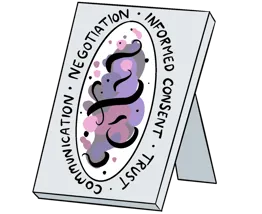Enrol in an online course today for flexible, self-paced learning—no fixed schedule required. Plus, enjoy lifetime access to course materials for convenient revisiting.
Why the Brain Belongs in Therapy
Advances in neuroscience these last two decades have helped us greatly understand the link between the brain and mental health. We are becoming increasingly aware, through evidence-based research such as functional magnetic resonance imaging (fMRIs), of the vital role of the brain in mental wellbeing.
Central to the furthering of our understanding has been the field of interpersonal neurobiology (IPNB). IPNB, founded by Dr Dan Siegel and Dr Allan Shore, is an interdisciplinary theoretical framework and practical working model that brings together common findings from a number of different disciplines. It attempts to link objective scientific findings with human subjective knowing. This enables us to further understand the concept of mind, patterns of human experience and neuroplasticity across the lifespan.
For simplicity’s sake, we can say that IPNB looks at how the brain gives rise to the mind, and how both the brain and the mind influence and affect human relationships. For the purpose of this blog, I’ll focus on the importance of the brain in mental health, and offer some top tips for keeping our brains and nervous systems in good shape.
Why is the brain so important in mental health?
The brain is referred to as the most complex organ in the body, and is made up of around 100 billion nerve cells called neurons. These neurons carry energy and information to different parts of the body and influence different systems in the body.
When Adverse Childhood Experiences (ACEs) occur, or an individual suffers trauma, the energy and information flow between different parts of the brain can become disrupted and impaired. This is usually the result of the limbic and reptilian part of the brain becoming activated and staying activated, staying shut down or fluctuating between both extremes of chaos and rigidity. In mental health, current research seems to suggest that this impairment of neural flow can contribute to, and may be the cause of, diagnoses such as anxiety, depression, BPD, DID, PTSD and many others in the ICD-10/ DSM-5.
Optimal brain functioning: ‘The Window of Tolerance’
Within the brain, the autonomic nervous system (ANS) has three branches – the sympathetic nervous system (SNS), parasympathetic nervous system (PNS) and enteric nervous system (ENS). It is typical for your nervous system to ebb and flow between sympathetic activation and parasympathetic activation throughout the day.
This is captured in the diagram below, where you can see Dr Dan Siegel’s ‘Window of Tolerance’. The diagram illustrates the optimal arousal zone of the nervous system, where you can tolerate affect and integrate information and experience. In this zone, you are able to carry out all sorts of executive functioning.

Disrupted neural flow gives rise to maladaptive coping strategies
As mentioned above, when ACEs or trauma occur, the activation and discharge cycle within the sympathetic and parasympathetic nervous system can become disrupted. This shows up in therapy with clients exhibiting a multitude of symptoms and maladaptive coping strategies such as self-harm, anxiety, depression, addiction, suicidal ideation and eating disorders. It can be helpful for both client and therapist to categorise the above symptoms and maladaptive coping strategies into either hyper-arousal (flight, fight, freeze response) or hypo-arousal (faint/collapse response), or both.
By understanding how the brain plays an important role in mental health, clients can be helped to a greater understanding of the issues they face – and how they can work, at first, towards stabilisation.
The top tips below are suggestions for helping us stay in this optimal zone. They can also be used to help clients regulate their nervous system when they feel dysregulated.
5 tips for effective brain self-care
- Be mindful Current research suggests that by practicing activating the pre-frontal cortex through mindful activities, mental regulation and neuroplasticity is enhanced. Remember, any activity can be done with mindfulness, whether it is brushing your teeth, washing the dishes or completing a work report.
- Meditate We now understand through fMRIs that different meditation techniques help calm, regulate and enhance neural connections in different parts of the brain. For the majority of people, meditation helps bring back online the pre-frontal cortex, which is directly linked to calming our fight, flight and freeze response.
- Exercise Exercise helps release endorphins, as well as enabling brain dopamine synthesis. We now know that increased dopamine levels regulate different brain functions, and endorphins give us the feel good factor!
- Get social Positive relationships with others over our lifetime enhance our wellbeing. As Dr Sue Johnson and Dr Stephen Porges say, ‘we are wired to connect’. So get out, get social and get that social engagement system online!
- Eat healthy Research suggests that eating healthy foods can help improve cognitive function including memory, decision-making ability, mental response time and mood.


















